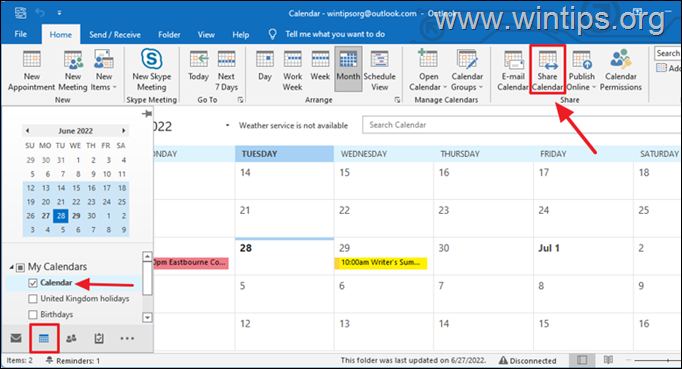Sharing Your Outlook Calendar Outdoors Your Group: A Complete Information
Sharing Your Outlook Calendar Outdoors Your Group: A Complete Information
Associated Articles: Sharing Your Outlook Calendar Outdoors Your Group: A Complete Information
Introduction
With enthusiasm, let’s navigate via the intriguing subject associated to Sharing Your Outlook Calendar Outdoors Your Group: A Complete Information. Let’s weave fascinating data and supply recent views to the readers.
Desk of Content material
Sharing Your Outlook Calendar Outdoors Your Group: A Complete Information

Sharing your Outlook calendar with people exterior your group can considerably improve collaboration, streamline scheduling, and enhance communication. Whether or not you are coordinating with shoppers, freelancers, or exterior companions, the flexibility to share your availability is invaluable. Nevertheless, navigating the safety and privateness concerns inherent in exterior calendar sharing requires a cautious method. This complete information will discover the assorted strategies for sharing your Outlook calendar externally, the related safety implications, greatest practices for managing permissions, and troubleshooting frequent points.
Strategies for Sharing Your Outlook Calendar Externally
Microsoft Outlook provides a number of methods to share your calendar with exterior events, every with its personal stage of entry and safety implications:
1. Sharing through Electronic mail Invitation:
That is essentially the most easy methodology. You possibly can ship a calendar invitation to people exterior your group, permitting them to view your calendar’s availability. The recipient would not want an Outlook account; they will open the invitation of their e mail consumer and see your free/busy data. Nevertheless, this solely reveals your free/busy standing, not the small print of your appointments.
- Execs: Easy, simple to know, would not require recipient to have an Outlook account.
- Cons: Restricted visibility (free/busy solely), no management over ongoing entry, recipient might not obtain updates if you happen to change your calendar.
2. Sharing a Calendar Hyperlink:
This methodology gives extra management. You possibly can generate a singular hyperlink to your calendar and share it with exterior events. You possibly can customise the extent of entry, permitting them to view solely your free/busy data or see the small print of your appointments. This methodology is good for ongoing collaboration the place common entry to your calendar is required.
- Execs: Extra management over entry stage (free/busy or detailed view), permits for ongoing entry, updates are routinely mirrored.
- Cons: Requires recipients to entry the calendar via an internet browser or Outlook, potential safety dangers if the hyperlink is shared inappropriately.
3. Delegating Entry:
This methodology permits somebody exterior your group to handle your calendar in your behalf. This could solely be utilized in conditions of excessive belief, because the delegate could have full management over your calendar. Think about this selection if you happen to want somebody to schedule appointments in your behalf.
- Execs: Full management for the delegate, splendid for administrative help from exterior sources.
- Cons: Highest safety threat, requires important belief, potential for unauthorized modifications to your calendar.
4. Utilizing a Shared Calendar:
Create a shared calendar inside your group and grant exterior entry to particular people. This methodology is greatest for collaborative initiatives the place a number of people have to view and replace a shared calendar.
- Execs: Centralized location for scheduling, permits for a number of exterior customers to entry and replace.
- Cons: Requires organising and managing a shared calendar inside your group, potential for conflicts if a number of customers replace concurrently.
Safety and Privateness Concerns
Sharing your calendar externally introduces safety and privateness dangers. Think about these elements earlier than sharing:
- Information Sensitivity: Do not share calendars containing extremely delicate data, similar to consumer confidential information or private medical appointments.
- Entry Ranges: All the time use the least privilege precept. Grant solely the mandatory entry stage to exterior customers. Keep away from delegating entry until completely mandatory.
- Hyperlink Safety: If utilizing calendar hyperlinks, keep away from sharing them publicly or through insecure channels. Use sturdy passwords and revoke entry to hyperlinks if they’re compromised.
- Password Safety: Guarantee sturdy passwords are used for all Outlook accounts and shared calendars.
- Multi-Issue Authentication (MFA): Allow MFA for all accounts to reinforce safety.
- Common Evaluation: Periodically evaluate your calendar sharing settings to make sure that solely licensed people have entry.
- Information Loss Prevention (DLP): Implement DLP insurance policies to forestall delicate data from being shared unintentionally.
- Compliance: Guarantee your calendar sharing practices adjust to related information privateness laws like GDPR or CCPA.
Finest Practices for Managing Permissions
- Clearly Outline Entry Ranges: Earlier than sharing, decide the extent of entry every exterior consumer requires.
- Use Particular Permissions: As a substitute of granting normal entry, assign particular permissions, similar to "view solely" or "edit."
- Repeatedly Audit Permissions: Periodically evaluate the permissions granted to exterior customers and revoke entry when it is not wanted.
- Password Administration: Implement sturdy password insurance policies and encourage using password managers.
- Communication: Talk clearly with exterior customers in regards to the goal of calendar sharing and the constraints of entry.
- Documentation: Keep documentation of your calendar sharing insurance policies and procedures.
Troubleshooting Frequent Points
- Recipient Cannot See Calendar: Confirm that the right hyperlink or invitation was despatched and that the recipient has the mandatory permissions. Examine for firewall or community restrictions.
- Calendar Not Updating: Make sure that the calendar is ready to routinely replace. Examine for any synchronization points.
- Entry Denied: Confirm that the recipient’s permissions are appropriately configured. Examine for any account lockouts or password points.
- Safety Considerations: If in case you have safety considerations, think about using a safer methodology of sharing, similar to a VPN or encrypted communication channels.
Selecting the Proper Methodology:
The optimum methodology for sharing your Outlook calendar externally depends upon a number of elements:
- Stage of Entry Required: Free/busy solely? Detailed view? Edit entry?
- Frequency of Collaboration: One-time occasion or ongoing collaboration?
- Safety Considerations: How delicate is the data being shared?
- Technical Experience: What stage of technical experience do the exterior customers possess?
Conclusion:
Sharing your Outlook calendar externally can vastly enhance collaboration and effectivity. Nevertheless, it is essential to prioritize safety and privateness. By rigorously contemplating the assorted strategies, implementing sturdy safety measures, and adhering to greatest practices, you possibly can leverage the advantages of exterior calendar sharing whereas minimizing potential dangers. Bear in mind to repeatedly evaluate your sharing settings and adapt your method as wanted to make sure a steadiness between collaboration and safety. All the time prioritize information safety and compliance with related laws to safeguard delicate data. By following this complete information, you possibly can successfully and securely share your Outlook calendar with exterior events, streamlining your workflow and enhancing your communication.








Closure
Thus, we hope this text has offered worthwhile insights into Sharing Your Outlook Calendar Outdoors Your Group: A Complete Information. We admire your consideration to our article. See you in our subsequent article!
Leave a Reply